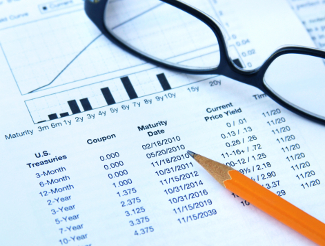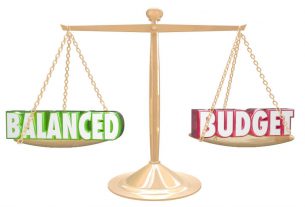One indicator that market analysts look to for signs of an impending recession is an inverted yield curve. Because of uncertainty about the future, investors demand more yield from longer-term investments. That’s why you’ll see higher interest rates on longer-term bonds than shorter-term bonds. An one-month bond may yield 3% interest while a 10-year bond may yield 5%. When those yields start to flatten, so that there’s not much difference between the yields on short and long maturities, or when the yield curve inverts so that short-term bonds yield more than long-term bonds, it’s almost a guarantee that a recession is imminent.
Of course, the absence of a flattened or inverted yield curve isn’t necessarily a sign that a recession isn’t imminent. A recession is still possible even without an inverted yield curve. And a yield curve inversion doesn’t guarantee a recession, although most times it has occurred a recession has followed within months. All that an inverted yield curve means is that investors suddenly are judging that short-term economic conditions will be less favorable than long-term conditions, meaning that they fear a recession.
The normal yield curve inversion that most people look at is the difference in yields on 2-year and 10-year Treasury securities. That difference in yield was 54 basis points (0.54 percentage points) at the beginning of the year. As of last week it had narrowed at one point to 11 basis points. It may only be a matter of time before that curve inverts.
It’s especially concerning that the 3-year/5-year and 2-year/5-year interest rate differentials have already inverted. The 3-year/5-year pair inverted on December 3, with the 3-year Treasury yielding 2.84% and the 5-year yielding 2.83%. The 2-year/5-year pair inverted the next day, with the 2-year Treasury yielding 2.80% and the 5-year Treasury yielding 2.79%.
At this point it’s probably only a matter of time before the 2-year/10-year pair inverts as well. Certainly with everything that is going on internationally with the trade conflict with China, rising prices in the US, and the slowdown in the housing market, all the conditions are ripe for a yield curve inversion.
Markets have been flashing warning signals for months that a severe recession is on the way. How it ultimately will manifest itself is anyone’s guess, but it won’t be fun. Stock markets lost more than half their value during the 2008 crisis and they stand to lose just as much this next time around. It’s critical that investors protect their assets this time around if they don’t want to end up hurt as badly as they were in 2008.
By investing in gold, investors can take advantage of gold’s ability to protect wealth. No other asset maintains its value like gold does. In fact, when stock markets decline, gold often increases in value. While stocks decreased over 50% during the 2008 crisis, gold increased over 25%. Don’t let yourself get caught hoping that markets will continue to move upwards when all the financial indicators are trending negative. Invest in gold today so that your retirement savings will stay safe and secure.
This article was originally posted on Goldco.




